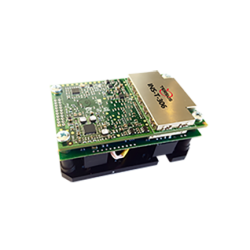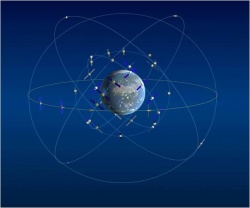With ION GNSS+ 2018 here, Inside GNSS asked José-Ángel Ávila-Rodríguez to share some thoughts on GNSS and Galileo. Ávila-Rodríguez is a European Technical Advisor officer of the ION Satellite Division and also is a contributing editor for the Working Papers column in Inside GNSS.
Q: What do you see as the biggest trends in GNSS in recent years?
A: The world of GNSS is going through a major life change. For many years, its role as primary source of position and time was unquestioned. However, its success and the emergence of an incredible number of new applications has also attracted new competitors and put GNSS in the spotlight of new challenges. As an example, whether we will still be talking about Assisted GNSS in the future or if instead we will talk about “Assisted 5G,” being GNSS the signals of opportunity rather than the primary source, will highly depend on our ability to improve our satellite navigation systems and not rest on the laurels of the past achievements. All major GNSS providers today work on renewing their fleet of satellites and modernizing their systems, in order to make sure they will still serve the needs of the users in the future. Effectively, the decisions of today will determine the role of GNSS in the future.
In addition to the challenge of building satellite navigation systems that serve needs that did not exist before and can hardly be predicted today, GNSS pays today the prize of its success. In fact, the accomplishments of past years have also turned GNSS into an attractive target for attackers and what also makes us forget sometimes that this is a technology that needs to evolve at the same pace as the emerging threats. Cybersecurity, interference and jamming are challenges that will require answers and brilliant engineers to deal with them in the future.
Q: How has Galileo progressed in recent years and how does having additional full operational constellations help in numerous applications?
A: On July 25th this year, Galileo launched four more satellites from Europe’s Spaceport in Kourou, French Guiana, on an Ariane 5 rocket. By now, the Galileo constellation has reached the number of 26 satellites in space and is close to completion. Since Galileo began Initial Services on December 15, 2016, more than 100 million commercial devices use it today. It has become part of our daily life and many users are not even aware that the latest purchased mobiles or location equipment is already equipped with it. This is a great success! Getting here was not easy and took an effort and at some points even tears. Galileo started with the dream of providing Europe with an independent and competitive satellite navigation system. At the beginning people spoke of Galileo as the European GPS. We now have an operational system made in Europe and performing to the level we targeted to reach. We can feel proud to call it by its own name.
Looking forward, the challenge ahead of us is to make sure this also remains true in the future, and to this purpose, Galileo is already paving the way toward its next generation. This will guarantee that Galileo remains a key contributor of the GNSS family in the future. In fact, for most of the future applications, users will make use of as many satellites in view as they can. Multi GNSS and multi frequency receivers are already part of today and even mass market applications already exploit two and even three frequencies. This will be even more true in the future. Very few took this for possible ten years ago!
For more ION GNSS+ coverage, visit insidegnss.com.






